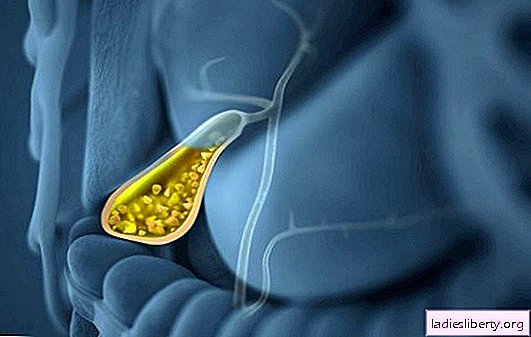
The problem of a lack of vitamin D (calciferol) has always been and remains to this day very relevant. According to WHO, almost half a billion people on the planet have symptoms of vitamin D deficiency, manifested to one degree or another. In northern countries, vitamin D deficiency threatens almost every inhabitant. This is due to the lack of sunny days. If its deficiency is compensated by the vitamin contained in food, problems may not arise. In the case of malnutrition, serious symptoms of this pathology appear.
Newborns who are breastfed are also at the same high risk: any miscarriage in the nutrition of the mother or child can lead to hypovitaminosis, since there are no other vitamin inputs into the baby's body, except for mother's milk.
Vitamin D - what is it
Vitamin D consists of six substances that are close in chemical structure and effect on the body, the main ones are: ergocalciferol (D2) and cholecalciferol (D3). Cholecalciferol is a "vitamin of the sun", ergocalciferol comes from food of animal origin. Their functions in the body are similar. Both vitamins of this group are primarily associated with mineral metabolism in bones and muscles. When it comes to vitamin D, these two vitamins are implied. This is a unique substance that acts both as a vitamin and as a hormone. But vitamin D2 (ergocalciferol) is very toxic, an overdose is life-threatening. It is poorly excreted, so it accumulates in the body. Since 2012, he was excluded from the list of vital drugs. Vitamin D3 has a list of restrictions for prescribing - its intake should be agreed with the doctor.
Symptoms of vitamin D deficiency - impaired function
Since the vitamin performs several important functions in the body, all the symptoms of vitamin D deficiency are associated with their violation. The most important role of calciferol is the exchange of calcium and phosphorus. Absorption of these minerals takes place in the intestinal epithelium with the participation of vitamin D. In case of intestinal pathology or a deficiency of vitamin D, calcium intake with blood is disrupted in the bones, muscles and other tissues in need. Calciferol deficiency leads to calcium deficiency in two ways:
· Malabsorption in the intestines: calcium, in sufficient quantities coming from food, is excreted in transit from the body without getting into the blood;
Violation of calcium deposition in the bones: getting into the blood, it does not participate in the formation of bones and other structures in the body, but is gradually excreted in the urine.
Symptoms of vitamin D deficiency in children and adults
The first symptoms of vitamin D deficiency appear in different ways: in children rickets develop, in adults - osteoporosis. The situation with children is much more complicated: bone mineralization is disturbed, they become soft and bend under load. Curvature of the legs, malocclusion develops, in severe cases, the development of the skull is impaired, which can lead to mental retardation. If these changes in the skeletal system have developed, it is impossible to correct them.
In an adult, hypovitaminosis D, in addition to osteoporosis, may cause parathyroidism, bone cancer, and, according to some, cardiovascular disease.
But all the symptoms of vitamin D deficiency develop over a long period of time: if a vitamin deficiency continues in a child from birth, and in an adult, it lasts several years. In the early stages, everything can be fixed. If no treatment measures are taken, the child’s hypovitaminosis passes into vitamin deficiency with the clinical picture of rickets, in the adult, the endocrine glands are disrupted, osteoporosis develops, and the function of the cardiovascular system is impaired.
According to ICD-10 (International Classification of Diseases), the code for hypovitaminosis D and rickets is the same: e.55. This means that these are different stages of one disease.
Progression of Vitamin D Deficiency Symptoms
In the initial stages, symptoms of vitamin D deficiency are absent. Gradually, the following manifestations in children appear:
· Stunted teeth and their curvature;
Muscle cramps
· Weight loss;
· Slow growth in babies;
· Constant weakness, weakness, unmotivated fatigue;
Stoop;
Bone deformation.
If treatment is not started in a timely manner, these symptoms will progress. In the future, all changes that will occur with bones and posture will remain, and they will not succeed in significantly changing - they become irreversible.
In adults, the effects are not so noticeable, but they are much more noticeable. Osteoporosis is a manifestation of vitamin D deficiency in most people of different ages and almost all after 50 years. It is manifested by increased fragility of bones and fractures in those circumstances in which they do not occur in a healthy person. Symptoms of vitamin D deficiency in osteoporosis, except for fractures, are manifested by pain in the bones and joints, weakness and bouts of pain in different muscle groups, unmotivated fatigue, general malaise and constantly feeling unwell for no apparent reason. A person may not be aware of the presence of this pathology. This is especially pronounced in women of Eastern countries who are forced to wear closed clothes that block insolation, and in older people, when the natural synthesis of vitamin in the body decreases sharply.
In addition to osteoporosis, symptoms of vitamin D deficiency in adults include carbohydrate metabolism disorders, which are manifested:
In obesity (even a small deficit provokes the development of metabolic carbohydrate metabolism, leading to weight loss) or weight loss;
In increasing blood pressure;
Headaches
Fatigue
In depression;
Heart disease
Diabetes
Atherosclerosis;
Insomnia
Visual impairment;
Violation of appetite;
Cramps in the limbs.
Recent studies have shown that saturating the body with vitamin D can significantly reduce the risk of developing cancer, autoimmune diseases and cardiovascular disease, and can prolong a person's life by 10-15 years.
How to Replenish Vitamin D Deficiency and Avoid Overdosing
Uncontrolled intake of vitamin D can lead to hypervitaminosis, because, as mentioned, it has the ability to accumulate - accumulate in the body. Symptoms of an excess of heavy calciferol. In adults, there are:
Severe headaches;
Nausea, diarrhea, fever;
In acute cases of overdose - vomiting;
Sweating
Pains in the abdomen, in the joints,
Anemia
In children: vomiting, thirst, abdominal pain, decreased activity, lethargy, developmental delay. Therefore, the doctor prescribes and controls the intake of vitamin. You can not self-medicate, take it not according to the instructions or indefinitely. The daily dose for adults is 400-800 IU. In special cases, according to the indications, a high dose of up to 4000 IU is prescribed, but this threshold cannot be exceeded.
In addition to the fact that calciferol is produced in the skin under the influence of sunlight, partly the need for it is covered by food products in the form of fatty fish (salmon, sardine, mackerel, tuna, swordfish), cod liver, egg yolk, cheese. From plant products - in corn oil. No vegetables contain vitamin D3. For vegetarians, the source of calciferol is three species of little-known mushrooms that are grown in Western countries, but we do not have them.
D3 in foods is very low: 41 IU is contained in a chicken egg. To get a daily dose of 800 IU, you need to eat 20 eggs. It is impossible to meet the body's need for vitamin D due to the resulting products.
If you are exposed to the sun 2-3 times a week with an open face and hands, approximately 1000 IU of vitamin D is produced in the body. If you stay in the sun for a long time, until the skin becomes red or burns, 10,000-15,000 IU are formed in the body immediately. vitamin A.
Multivitamin preparations that contain vitamin D: Complivit D3 forte, Vitrum Osteomag, Calcemin Advance, Calcium D3 Nycomed, Alpha-D3-Teva, Vitrum Calcium + Vitamin D3, Centrum.
The choice and dosage should be agreed with the doctor. If you adhere to all the recommendations, you can avoid unpleasant symptoms of a lack of vitamin D, as well as dangerous hypervitaminosis.











